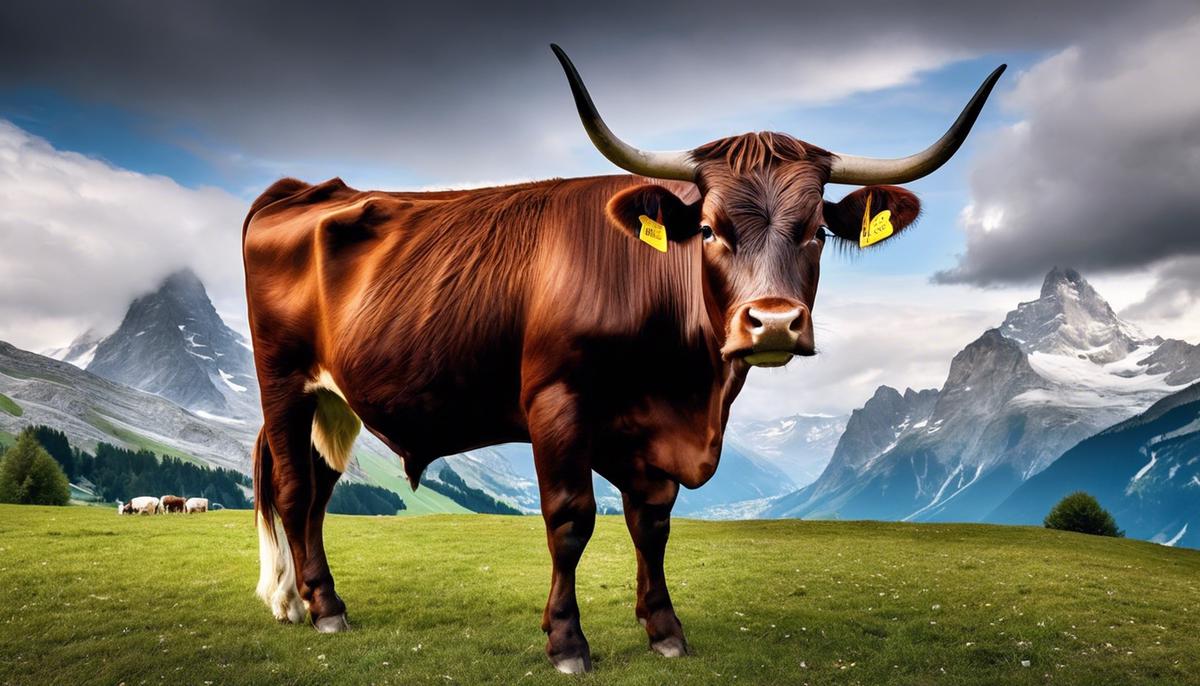Steeped in rich history and exhibiting unique biological features, the Eringer cattle breed holds significant importance in the Swiss agriculture and culture. Originating centuries ago, these animals have iteratively molded themselves to exist in harmony with the imposing Alpine agro-ecosystems, contributing to and benefiting from the biodiversity and ecological balance of these high-altitude pastures. Yet their significance extends further than their ecological footprint, touching upon elements of sociology, economy, and genetics. This exploration of the Eringer cattle breed delves into their historical background, their relationship with the Alpine agro-ecosystems, the interesting complexity of their genetic traits, and their profound cultural and economic impact on Swiss society.
Table of Contents (Horspedia)
Background and History of Eringer Cattle
The Eringer Cattle: An Agricultural Gem and a Swiss Cultural Icon
The context of agricultural history presents a veritable treasure trove of information, rare breeds, and practices, with a salient example being the Eringer cattle breed. This breed of small, robust cows is linked intricately to the cultural and agricultural landscape of Switzerland. Tracing the origins of the Eringer breed uncovers a significant past, laden with historical and cultural ramifications.
The inception of the Eringer breed traces back to a remote period, with some sources suggesting a historical lineage extending back up to 3000 years. These cattle, known for their dark, thick fur and sturdy limbs, hail from the canton of Valais in southwestern Switzerland, amidst snow-capped mountains and alongside the famous Rhone River. The specific region is known as “Eringen,” lending its name to this species of cattle and signifying their geographical roots.
Despite the beauty of Valais, the region presents a harsh environment for cattle breeding. The geographical topography, heavily influenced by alpine conditions, gives rise to a rugged landscape and harsh winters. As a product of their environment, Eringer cattle have evolved over millennia to withstand severe weather conditions. The breed’s hardiness exemplifies a testimony to the principle of survival of the fittest and symbolizes their inherent value for alpine farming.
Historical literature suggests profound cultural ties between the Eringer breed and the Swiss, especially residents of the Valais region. The cattle have long been an integral part of alpine agricultural practices, utilized primarily for dairy and meat products. The production of cheese, a cornerstone of Swiss culinary culture, relied heavily on milk from Eringer cattle, marking a significant contribution of this breed to Swiss traditions.
Furthermore, the Eringer breed plays a central role in the traditional Swiss festival known as “Combats des Reines,” translating directly to “cow fights.” These combative events were not driven by a thirst for violence, but were an organized way for the communities to establish the hierarchies within cattle herds before the summer grazing period. These physical contests became cultural spectacles, further solidifying the breed’s significance in Swiss tradition and folklore.
In conclusion, the Eringer cattle breed, originating from the harsh yet scenic canton of Valais, is a remarkable testament to biological adaptation and cultural significance. Mastering the inclement weather of the alpine region, contributing to the traditionally respected dairy industry and instigating communal gatherings during the combat festivities, the Eringer cattle are much more than just another breed. They embody the resilience and heritage of Switzerland’s alpine farmers and stand as a quintessential symbol of the nation’s rich agricultural past.
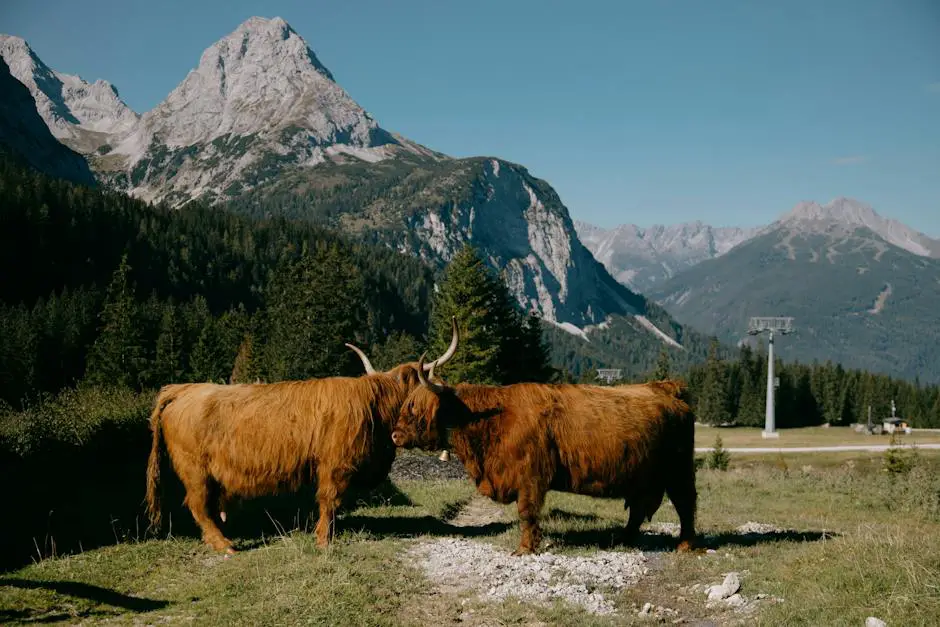
Eringer Cattle in Alpine Agro-ecosystems
The Eringer cattle perform essential functions within the framework of Alpine agro-ecosystems in Switzerland and beyond. Not only instrumental in agricultural production, these robust bovines directly contribute to biodiversity and landscape management, thereby fostering a harmonious coexistence between humans, animals, and the environment.
Firstly, Eringer cattle play a vital role in maintaining the heterogeneity and fertility of alpine grasslands. With their extensive grazing habits, they prevent the expansion of shrubs and trees into pasture areas, thereby promoting survival of diverse plant species. The bovines’ selective grazing behavior modulates mosaic-like vegetation patterns, fostering a proliferation of flora and fauna unique to the Alpine meadows. Simultaneously, by trampling and fertilizing the soil, they amplify the nutrient cycle and soil structure, improving overall pasture productivity.
Additionally, Eringer cattle indirectly contribute to carbon sequestration, a process critical for mitigating the impacts of global warming. The alpine pastures, enriched by their grazing, store substantial amounts of carbon in their soil. By contributing to their upkeep, the cattle play their part in reducing greenhouse gas emissions.
Moreover, the livestock’s hardy physical characteristics make them especially well-suited for the rough and harsh alpine environment. Adaptations include short and robust legs favored for steep uphill climbs, and their small size requiring fewer resources for survival. Their dense, dark coat serves as insulation during harsh winters, while a strong and combative nature allows them to protect themselves and their calves from predators.
Simultaneously, these qualities make Eringer cattle economically viable for alpine farmers. They are less demanding than larger cattle breeds, requiring fewer supplementary feeds during the snowy months and lower veterinary costs due to their resilient nature. This resilience enhances their ability to provide consistent meat and milk yields, even in challenging climatic conditions.
Furthermore, their economical use of terrain and climatic resilience has enabled the practice of transhumance – a seasonal livestock migration between highland and lowland pastures – to remain financially viable and ecologically sustainable. This practice showcases a preservation of age-old traditions interwoven with landscape management, and hence forms a pivotal aspect of maintaining the cultural landscape integral to Swiss heritage.
In conclusion, the role of Eringer cattle within the Alpine agro-ecosystem is multifold and strikingly prominent. These resilient animals are inseparable from the land they traverse, contributing enormously to agriculture, biodiversity, climate resilience, and cultural heritage. They offer a remarkable testament to how human, animal, and environmental interests can be simultaneously promoted, sustained, and celebrated for generations to come.
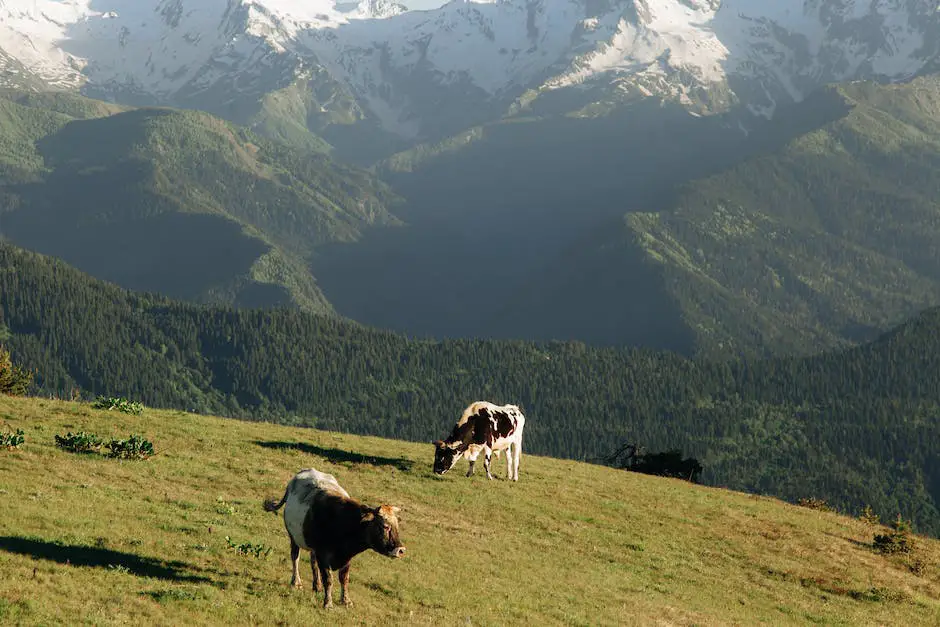
Genetic Traits and Breeding Practices
Transitioning from the cultural and historical significance of the Eringer cattle to a closer examination of their genetic distinctiveness is a venture most fascinating. As a distinct breed, the Eringer cattle exhibit some unique genetic traits that have been preserved and adapted over centuries not just due to environmental factors but also due to conscious human breeding practices.
The uniqueness of Eringer cattle’s genetic traits is influenced by their polymorphisms. Polymorphisms, essentially variations in DNA sequences, are often responsible for the diversity seen within a breed. In Eringer cattle, specific polymorphisms may contribute to their hardiness, fertility, and high muscle percentage, traits that have adapted to survive the harsh alpine environment of Switzerland. Genetic research on these cattle is critical to understanding these important traits which have implications not solely for Eringer cattle, but for broad understandings of genetics and adaptation in various livestock species.
Closely related to this discussion of genetics is the important role of concerted breeding practices employed to maintain the distinctive traits of Eringer cattle. While natural selection plays a part, human intervention via livestock breeding has played an instrumental role in the substance of Eringer cattle genes. It is through selective breeding practices— choosing certain cattle based on desirable traits— that farmers attempt to reinforce the genetic components of Eringer cattle that contribute to their survival and productivity.
Cutting-edge genetic technology and techniques play an increasingly critical role in this process. For instance, genome-wide association studies (GWAS), are being performed to detect the associations between genetic variants and selected traits of Eringer cattle. This helps breeders make more informed decisions, allowing selection for favorable alleles to be done more efficiently and effectively.
Yet, alongside high-tech approaches, traditional practices also endure. The annual Combats des Reines, while a cultural spectacle, also plays a critical role in maintaining the breed’s vitality. Farmers choose the strongest cows to participate and those that perform well are preferred in the breeding cycle. This approach, rooted in tradition, serves to naturally select for robustness and resilience.
In sum, the remarkable genetic traits of the Eringer cattle are a testament to the resilience of evolution and human adaptability to environmental challenges. Meticulous breeding practices paired with modern science effectively work hand in hand to preserve and refine these unique genetic features, ensuring the Eringer cattle continue to thrive in the challenging conditions of the Swiss Alps and contribute significantly to Switzerland’s agricultural livelihood and cultural heritage. In recognizing these distinct attributes, one can appreciate the importance and complexity of genetic diversity and its preservation.
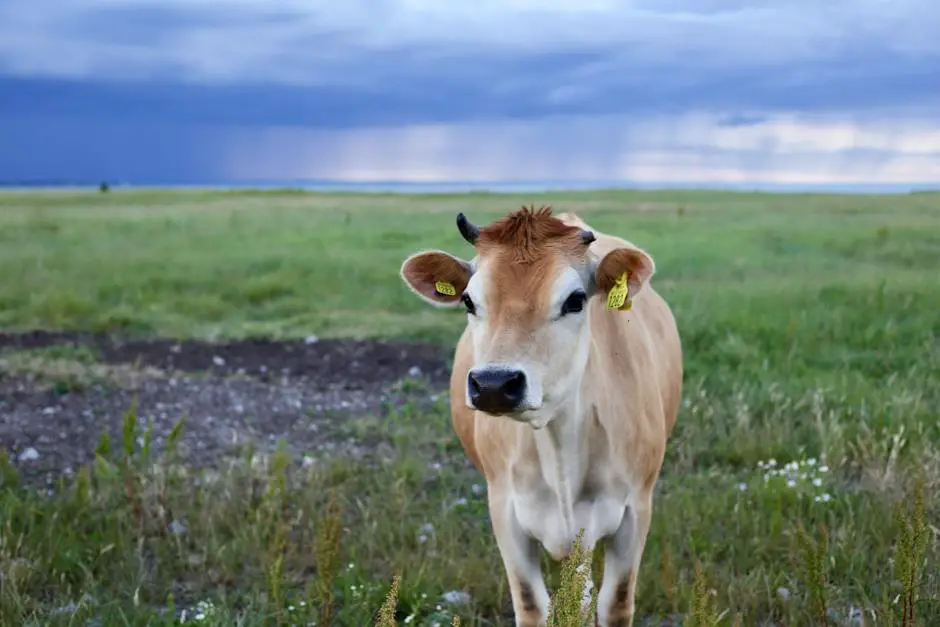
Economic and Cultural Importance
Turning our gaze now towards the larger economic specter, the Eringer cattle wield an incredible influence over Swiss agricultural economics. The breed, strenuous and fit for the tough alpine environment, endows exaggerated economic viability to the farmers that tend to them. As such, the cattle act as a bulwark against economic instability, especially in an era of increased market volatilities and uncertainties impacting the farming communities.
In essence, the Eringer cattle, adept as they are to the alpine environment, indirectly contribute to enhancing biodiversity, wherein their grazing and subsequent fertilizing of the grasslands stymies the growth of shrubs and trees that would otherwise overrun these areas. Their actions promote and sustain the fertility of pasturelands, rendering the Swiss terrain a mosaic of vibrant hues, a testament to the ecological diversity. From an environmental perspective, the cattle are thus key actors in the sphere of carbon sequestration, where via complex ecological processes, they aid in trapping carbon emissions – a facet vital for reducing global warming.
Such interactions symbolize the deep-rooted symbiotic relationship between man and animal, wherein culture, agriculture, and biodiversity are nurtured and maintained, thus cementing the relationship between the residents of Switzerland and their beloved Eringer cattle.
The idiosyncrasies vested upon the Eringer cattle by their DNA harbor a distinctive genetic signature. The genetic variation, accrued polymorphisms, and the multitude of alleles within the population attribute to the unique physical characteristics including the adaption to the harsh alpine environment. Scientific exploration reveals that careful and selective breeding practices, performed over generations, has preserved these traits.
Cutting-edge genetic technologies, currently riding the wave of rapid development and deployment, provide an exciting vantage point. Detailed genetic profiling, for example, may enhance the quality and vitality of the breed by judiciously selecting specific traits. Such practices could offer a new dimension in boosting the adaptability, robustness, and vitality of the Eringer.
The traditional annual “Combats des Reines” further adds to the cultural richness and vitality of the breed. These tournaments offer the intriguing spectacle of strategy and power, humanely choreographed, providing a reminder of how nature presents, at times, lessons in humility and respect.
The resilience and tenacity of the Eringer cattle are arguably their most defining attributes. Testament to this are the challenging Alpine landscapes that they call home. Yet, they thrive, thus underscoring their crucial contribution to Switzerland’s agricultural sector and cultural environment.
In safeguarding the future of the Eringer cattle and the unique genetic diversity they offer, the stakes are high. The preservation and continued understanding of their genetic makeup pose a dynamic challenge to biologists, farmers, and indeed, to all who cherish the tapestry of life in its myriad forms.
The narrative of the Eringer cattle thus remains a blend of economics, culture, biodiversity, and science – an intricate tale that will continue to resonate in the heart of Switzerland. Through their very existence and the multitudes in contributions they bear, they lend a touch of uniqueness to the highlands of Switzerland. Truly, the Eringer cattle are not just a breed; they are an indelible part of Swiss identity.
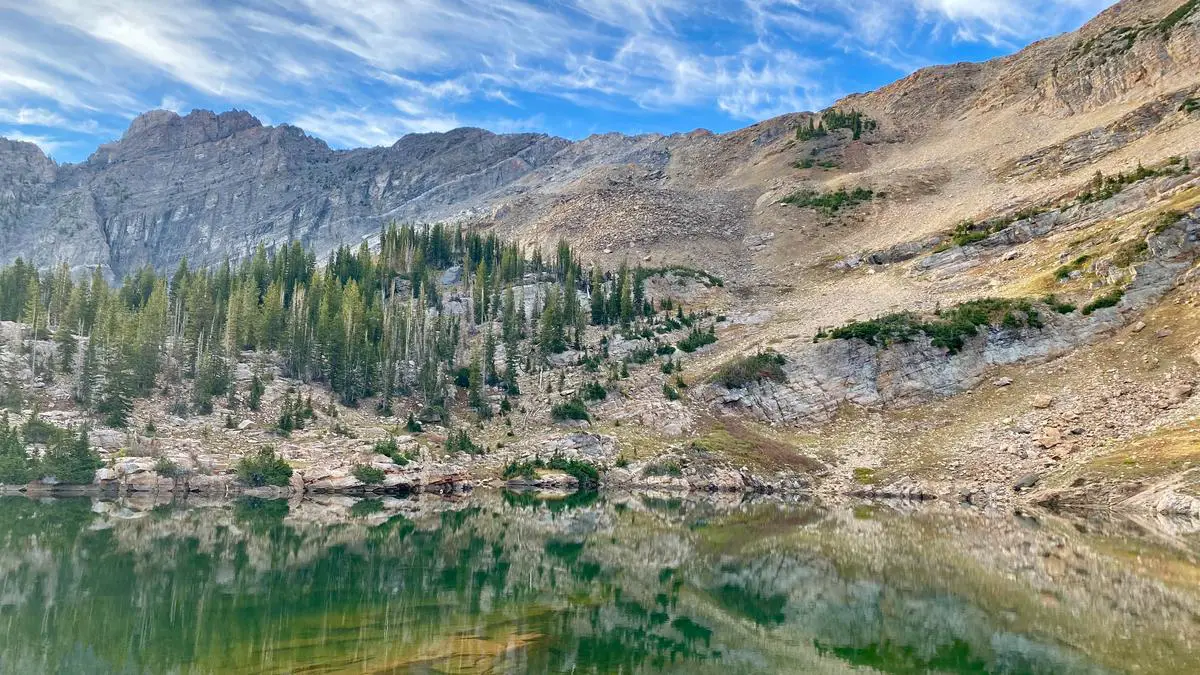
Photo by ninjab12000 on Unsplash
In observing the strikingly distinctive Eringer cattle breed from both ecological and sociocultural angles, one can discover a creature of resilient adaptiveness and deep embeddedness in Switzerland’s heritage. Their extraordinary genetic traits enhance their survival in high-altitude ecosystems, and their role extends beyond merely grass-chewing ruminants to being crucial sustainers of biodiversity, providers of economic value, and embodiments of cultural tradition. With a close look into their breeding practices, their contribution to local economies, and their significance in cultural narratives, it becomes evident that the Eringer cattle are multi-faceted agents of ecological stability, economic prosperity, and cultural continuity. Ultimately, the remarkable journey of the Eringer cattle illustrates the intricate interplay between humanity and nature, underscoring the responsibility to acknowledge, protect, and cherish such valuable links in our shared biological and cultural heritage.
